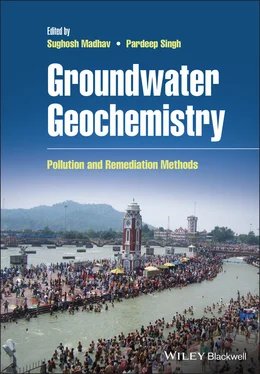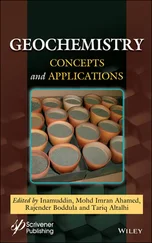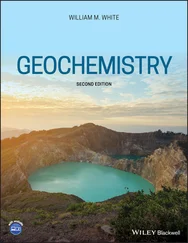1 ...6 7 8 10 11 12 ...34 Manganese is the 12th most abundant element in the environment, and it is a crucial component of plants and animals. It has a strong positive correlation with iron, and its chemistry is also somewhat like iron as both metals take part in redox reactions in weathering conditions. Manganese substitutes the iron, magnesium, or calcium in silicate structures as it is not a crucial component of any of the common silicate rock minerals. Manganese exists in divalent form in several igneous and metamorphic minerals as a small component, but it is an essential component of basalt. It has occurred in minerals like olivine, pyroxene, and amphibole and a minor amount generally occurred in dolomite and limestone as a substitute for calcium (CGWB 2014).
In soil, manganese arises from mineral weathering and atmospheric deposition instigating from both natural and anthropogenic sources. In soil solution, only the divalent ion form is stable, whereas Mn (III) and Mn (IV) are steady in the solid phase of soil. Soil parameters like acidity, wetness, organic matter content, biological activity, etc., affect the mobility of manganese. The solubility of manganese in the soil is controlled by redox potential and soil pH. Its mobility rises at lower pH or lower redox potential because these favour the reduction of insoluble manganese oxides. Manganese forms bonds with organic matter, oxides, and silicates, which lead to a decrease in solubility at soil pH above 6. Hence high pH and higher organic matter content usually lower the availability and solubility of manganese, whereas in acidic soils with low organic matter, it is readily available. The anaerobic conditions (at pH above 6) and aerobic conditions pH below 5.5 both resulted in an increase of solubility of manganese (CGWB 2014).
The existence of different minerals at the aquifer influence the levels of Mn found in groundwater from natural leaching processes. It usually occurs in deeper wells where the water normally interacts with the rock for an extended time. In groundwater, manganese often occurs together with iron as it originated from ferromagnesian, but its concentration is usually lower than iron. Though it is crucial for humans and other living beings, at higher concentration, it is lethal. The higher concentration of manganese is stated primarily from West Bengal, Tamil Nadu, Orissa, UP, and Bihar (Garduño et al. 2011).
The permissible limit of Mn in drinking water given by WHO (2011) and BIS (2012) is 300 and 100 μg/L, respectively. Inhalation or contact with a higher concentration of Mn can cause damage to the central nervous system (Singh et al. 2011). It can readily accumulate in the brain, particularly in the basal ganglia, and can result in an irretrievable neurological syndrome like Parkinson's disease. Comparatively higher doses of manganese affect DNA replication and lead to mutations in the microorganism and mammalian cells. In mammalian cells, manganese causes DNA impairment and chromosome abnormalities. The higher concentration of it affect fertility in mammals and are deadly to the embryo and foetus (Singh et al. 2011).
Chromium mostly occurs in trivalent and hexavalent forms depending on pH. In shallow aquifers, Cr (VI) is the dominant and toxic form, and its major species include chromate CrO 4 −2and dichromate Cr 2O 7 −2(especially Ba 2+, Pb +2, and Ag +) (Hashim et al. 2011). At low pH (<4), Cr (III) is the dominant form of Cr. In soil organic matter, S 2−and Fe 2+ions under anaerobic conditions lead to the reduction of Cr (VI) to Cr (III) (Hashim et al. 2011). The Cr (VI) has higher mobility and toxicity than Cr (III), and it is more problematic to eliminate Cr (VI) in water. In water, chromium (III) is typically present as the free‐ion state, but it is also related to hydroxide ions depending on pH and forming chromium (OH) 2+, chromium (OH) 2+, chromium (OH) 3, and chromium (OH) 4−. The major Cr species found in aqueous solution are SO 4 2−, NH 4 +, and CN; these are formed by complexes of Cr 3+with organic and inorganic ligands. The equilibrium of Cr among the two oxidation forms has relied on oxidation kinetics which further depends on biochemical settings, such as pH, redox, and nutrient levels that direct microbial activity (CGWB 2014).
Chromium has been found in diverse parts of India. Its source has been generally attributed to anthropogenic inputs. However, chromite deposits in the Sukinda area of Orissa are identified as geogenic sources. In the Sukinda area, the lateralization progress including oxidation and change of the serpentines generates alkaline pore water which enables the formation of Cr (VI) from the inactive chromites and leads to chromium pollution of water in and around the area (CGWB 2014).
Chromium (III) has a particular transportation mechanism; because of this, only limited quantities of it pass in the cells. However, numerous in vitro studies specified that higher levels of Cr (III) in the cell could cause DNA impairment. Reasonable uptake of Cr (III) via dietary supplements causes no risk, whereas its severe oral toxicity varies between 1.5 and 3.3 mg/kg.
The severe toxicity of chromium (VI) is because of its strong oxidation properties. Once it enters the bloodstream, it harms the kidneys, the liver, and blood cells by oxidation reactions (CGWB 2014). Excess Cr (VI) can cause damage to the nervous system, fatigue, irritability, skin allergies, dermatitis, dermal necrosis, and dermal corrosion (Singh et al. 2011).
1.6.4 Remediation of Heavy Metals
Heavy metal can be eliminated from groundwater by applying various chemical, biological/biochemical, and physicochemical remediation technologies. Chemical methods include a reduction (by using dithionites, H 2S gas, iron‐based technologies such as zerovalent ion, iron salts), chemical flushing (using soil washing, chelate flushing, ion exchange) and in situ chemical fixation. Biological/biochemical remediation has been carried out by biological activity in the subsurface, biosorption (by using biosurfactant, metal uptake by the organism, cellulosic material and agricultural wastes) and enhanced bio restoration. Physico‐chemical remediation applied by using adsorption/absorption/filtration (using surfactants, membrane separation, synthetic activated carbon, industrial byproducts and waste, ferrous materials, iron‐based soil amendments, mineral products), electrokinetic treatment and permeable reactive barriers, which include sorption (in red mud, activated carbon, zeolite, iron sorbent), precipitation via zero‐valent ion, complexing agents, atomized slag, caustic magnesia, and biological barriers (denitrification and sulphate reduction, microbes) (Hashim et al. 2011).
Selenium is a crucial element, but at higher concentrations, it is toxic (Sharma et al. 2015). Natural sources of Se account for 50–65% of total emissions, globally. Natural sources of atmospheric selenium are crustal erosion, which causes its suspension in soil and dust, biologically originated volatile organo‐selenium compounds, volcanoes, and aerosol particles related with sea spray (Nriagu and Pacyna 1988; Sharma et al. 2015). Sedimentary rocks have a higher concentration of Se than the igneous rocks. Its concentrations in underlying rocks are strongly correlated with its concentration in soils. Soils rich in Se are frequently originated from marine deposits. In the oxic environment of surface soils, the main species of Se are selenite (Se (IV)) and selenate (Se (VI)) (Sharma et al. 2015).
It is a minor constituent of natural waters, and its level in water is generally found to be less than 10 mg/L (Sohrin and Bruland 2011). Laboratory studies suggested that a nonvolatile dimethyl selenonium ion can probably be changed into volatile dimethyl selenide at neutral pH (Cooke and Bruland 1987). This can be attributed as its pathway for the in‐situ origin of dimethyl selenide in natural waters. Selenium chemistry in groundwater is controlled by four crucial variables. These are the prime source, the transportation in solution, the courses of mobilization, and retaining at the water–solid interface and its level in groundwater under a semiarid and arid environment (Nicolli et al. 2012). Selenium in groundwater is restricted to particular locations and has been reported from dispersed areas in Himachal Pradesh and Punjab (CGWB 2014; Lapworth et al. 2017).
Читать дальше




